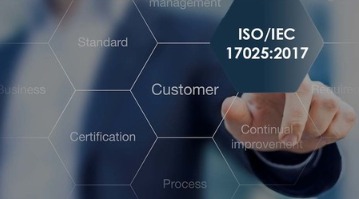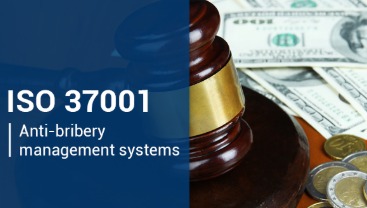ISO 17025: Empowering Laboratories with Quality and Competence
Introduction
In an increasingly competitive and quality-conscious world, the reliability of laboratory results plays a crucial role across industries—from healthcare and food safety to manufacturing and environmental monitoring. Organizations depend on accurate testing and calibration data to make informed decisions, ensure compliance, and maintain product integrity.
To guarantee trust and global recognition of laboratory results, the ISO/IEC 17025:2017 standard was developed. This internationally recognized standard sets out the general requirements for the competence of testing and calibration laboratories. Laboratories accredited to ISO 17025 demonstrate their ability to produce valid and reliable results consistently, enhancing customer confidence and international acceptance of their reports.
What is ISO 17025?
ISO/IEC 17025 is the primary international standard used by testing and calibration laboratories. It specifies the general requirements for competence, impartiality, and consistent operation of laboratories.
Developed jointly by the International Organization for Standardization (ISO) and the International Electrotechnical Commission (IEC), the standard applies to all organizations performing laboratory activities, regardless of their size or the number of personnel.
Essentially, ISO 17025 provides laboratories with a framework for establishing a quality management system that ensures technically valid testing and calibration results.
Purpose of ISO 17025
The main goal of ISO 17025 is to ensure that laboratories operate competently and generate accurate, consistent, and reliable data. Accreditation under this standard signifies that a laboratory not only follows globally accepted testing methods but also maintains traceability, proper documentation, and impartiality.
It assures customers, regulatory authorities, and stakeholders that the laboratory’s results can be trusted both nationally and internationally.
Key Principles of ISO 17025
The ISO 17025:2017 standard is based on several fundamental principles that ensure the quality and credibility of laboratory operations:
-
Impartiality and Independence:
Laboratories must operate impartially and avoid conflicts of interest that could influence results.
-
Competence:
All personnel must be qualified and competent for their assigned tasks.
-
Consistency of Operations:
Procedures must be standardized to ensure uniformity and repeatability in testing or calibration.
-
Traceability:
Measurements and calibrations should be traceable to international or national standards.
-
Customer Focus:
Laboratories must understand and meet the requirements of clients and regulatory authorities.
-
Continuous Improvement:
The laboratory should maintain an ongoing process of performance monitoring and system enhancement.
Structure of ISO/IEC 17025:2017
The 2017 revision aligns ISO 17025 with other modern management system standards, following the Annex SL framework. It consists of the following main clauses:
-
Scope
-
Normative References
-
Terms and Definitions
-
General Requirements (Impartiality and Confidentiality)
-
Structural Requirements (Organizational structure and responsibilities)
-
Resource Requirements (Personnel, facilities, equipment, and measurement traceability)
-
Process Requirements (Sampling, testing, calibration, reporting, and management of data)
-
Management System Requirements (Options for ISO 9001-based or independent management systems)
This structure makes it easier for laboratories to integrate ISO 17025 with other standards, such as ISO 9001 and ISO 45001.
Benefits of ISO 17025 Accreditation
For Laboratories
-
Global Recognition:
ISO 17025-accredited laboratories are recognized internationally through mutual recognition arrangements, facilitating acceptance of test results across borders.
-
Enhanced Credibility and Trust:
Accreditation demonstrates technical competence, accuracy, and reliability to clients, regulators, and partners.
-
Operational Efficiency:
Standardized procedures minimize errors, rework, and delays, improving overall efficiency.
-
Quality Assurance:
A robust quality management system ensures consistent performance and reliable output.
-
Continuous Improvement:
Regular audits and reviews drive systematic enhancement in performance and technical capabilities.
For Customers and Industry
-
Confidence in Results:
Customers can trust that data and reports are accurate and compliant with international standards.
-
Regulatory Compliance:
Many industries and government agencies require ISO 17025-accredited results for approvals and certifications.
-
Reduced Risk:
Reliable testing reduces costly product recalls, non-compliance issues, and safety risks.
For Governments and Regulators
-
International Harmonization:
Ensures that testing and calibration results from accredited laboratories are recognized worldwide.
-
Public Safety and Confidence:
Enhances the integrity of health, safety, and environmental monitoring systems.
Industries that Benefit from ISO 17025
ISO 17025 accreditation is applicable across a wide range of sectors, including:
-
Manufacturing and Engineering (product testing and calibration of instruments)
-
Pharmaceuticals and Biotechnology (quality control, validation, and analytical testing)
-
Food and Agriculture (food safety testing, residue analysis, and microbiology)
-
Environmental Science (air, water, and soil testing)
-
Healthcare and Clinical Laboratories
-
Automotive and Aerospace (materials testing and component calibration)
-
Construction and Civil Engineering (building materials and structural testing)
In each of these industries, accurate and reliable laboratory data are essential for compliance, safety, and performance.
Steps to Achieve ISO 17025 Accreditation
-
Understand the Standard:
Begin by reviewing ISO/IEC 17025:2017 requirements to understand what is expected.
-
Gap Analysis:
Compare existing laboratory processes and systems with ISO 17025 requirements to identify deficiencies.
-
Develop a Quality Management System:
Create documentation such as the quality manual, policies, procedures, and records.
-
Training and Competency Development:
Train personnel to understand the standard and perform their duties competently.
-
Implement the System:
Put the documented system into practice across all laboratory activities.
-
Internal Audit:
Conduct internal audits to verify compliance and identify areas for improvement.
-
Management Review:
Management evaluates the effectiveness of the system and ensures alignment with laboratory goals.
-
Apply for Accreditation:
Submit an application to a recognized accreditation body (such as NABL in India or UKAS in the UK).
-
External Assessment:
The accreditation body conducts an on-site audit to verify compliance and technical competence.
-
Accreditation and Continuous Monitoring:
Once accredited, the laboratory undergoes periodic surveillance audits to maintain its accreditation status.
Integration with Other Standards
ISO 17025 can be effectively integrated with other management system standards to create a unified, efficient framework:
-
ISO 9001 (Quality Management):
Strengthens process control and customer satisfaction.
-
ISO 14001 (Environmental Management):
Ensures eco-friendly and sustainable laboratory operations.
-
ISO 45001 (Occupational Health and Safety):
Promotes workplace safety and employee well-being.
-
ISO 15189 (Medical Laboratories):
Specifically tailored for clinical and medical laboratories.
Such integration enables laboratories to manage multiple compliance requirements seamlessly and improve overall governance.
Recent Updates in ISO 17025:2017
The latest version of ISO 17025 introduced several key changes compared to earlier editions:
-
Process-Based Approach:
Emphasizes risk management and process control rather than prescriptive requirements.
-
Information Technology Integration:
Recognizes electronic records and management systems in laboratory operations.
-
Broader Scope:
Applies to all organizations performing laboratory activities, including sampling and field testing.
-
Improved Alignment:
Harmonized structure with other ISO standards for easier implementation and integration.
These updates make ISO 17025 more adaptable to modern laboratory practices and technological advancements.
Challenges in Implementing ISO 17025
While the benefits are substantial, achieving ISO 17025 accreditation can present some challenges:
-
Understanding and interpreting technical requirements correctly.
-
Ensuring measurement traceability and equipment calibration.
-
Maintaining impartiality and confidentiality.
-
Documenting all processes and records effectively.
-
Sustaining continuous improvement after accreditation.
However, with proper planning, training, and expert guidance, laboratories can overcome these challenges and build a robust, compliant system.
Conclusion
ISO/IEC 17025:2017 serves as the global benchmark for laboratory competence, reliability, and quality. Accreditation under this standard demonstrates that a laboratory operates impartially, produces valid results, and adheres to internationally accepted practices.
For testing and calibration laboratories, achieving ISO 17025 is more than a compliance requirement—it’s a strategic commitment to excellence, credibility, and continuous improvement. It enhances customer trust, expands business opportunities, and ensures global recognition of laboratory results.
In today’s quality-driven environment, ISO 17025 stands as a symbol of confidence and competence, empowering laboratories to contribute to innovation, safety, and progress across every industry they serve.







